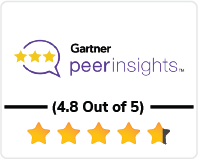The European Single Electronic Format (ESEF) has revolutionized financial reporting in the European Union, mandating the use of XBRL tagging for annual financial reports. This shift has far-reaching implications, not only for financial professionals but also for investor relations (IR) teams. In this blog post, we will explore how ESEF can enhance communication with stakeholders, increase transparency, and foster trust.
Understanding ESEF
Before diving into the impact of ESEF on investor relations, let’s briefly recap what ESEF entails. Essentially, ESEF requires companies to embed XBRL tags within their financial reports. XBRL, or Extensible Business Reporting Language, is a standardized way of exchanging business information electronically. By using XBRL, financial data becomes machine-readable, making it easier to analyze, compare, and understand.
Key Benefits of ESEF for Investor Relations
Enhanced Transparency:
- Standardized Format: ESEF ensures that financial reports adhere to a standardized format, making it easier for investors to compare information across different companies.
- Machine-Readability: XBRL tags enable automated data extraction and analysis, reducing the time it takes for investors to gain insights.
- Data Consistency: By using a common taxonomy, ESEF helps to eliminate inconsistencies in financial reporting, improving data quality and reliability.
Improved Accessibility:
- Digital Format: ESEF mandates electronic filing, making financial reports more accessible to a wider audience.
- Search Functionality: XBRL tags allow for advanced search capabilities, enabling investors to quickly find specific information.
- Data Visualization: ESEF data can be easily visualized using charts and graphs, making it easier to understand complex financial information.
Enhanced Communication:
- Targeted Messaging: ESEF can help IR teams tailor their messaging to specific investor groups by providing granular data that can be used to address their concerns.
- Data-Driven Insights: By analyzing ESEF data, IR teams can identify trends and patterns that can be used to support their messaging and engage with investors more effectively.
- Proactive Disclosure: ESEF can facilitate proactive disclosure of material information, helping to prevent market speculation and maintain investor confidence.
Cost-Efficiency:
- Automated Processes: ESEF can automate many of the tasks involved in financial reporting, reducing costs and improving efficiency.
- Reduced Errors: The standardized format of ESEF can help to reduce errors and inconsistencies in financial reporting, saving time and money.
- Improved Data Quality: By ensuring data consistency and accuracy, ESEF can help to improve the overall quality of financial information.
Best Practices for Leveraging ESEF in Investor Relations
Invest in Technology:
- ESEF Software: Implement specialized software that can help you create, validate, and submit ESEF reports efficiently.
- Data Analytics Tools: Utilize data analytics tools to extract insights from ESEF data and identify trends.
Train Your Team:
- ESEF Knowledge: Ensure that your IR team has a solid understanding of ESEF and XBRL.
- Data Analysis Skills: Provide training on data analysis techniques to help your team leverage ESEF data effectively.
Develop a Communication Strategy:
- Target Audience: Identify your target investor groups and tailor your messaging accordingly.
- Key Messages: Develop clear and concise key messages that highlight the most important aspects of your financial performance.
- Channels: Choose the most appropriate communication channels to reach your target audience, such as investor conferences, analyst calls, and social media.
Utilize ESEF Data for Storytelling:
- Narrative Framework: Use ESEF data to create a compelling narrative that highlights your company’s achievements and future prospects.
- Visualizations: Use charts and graphs to illustrate key points and make your messaging more engaging.
Monitor and Adapt:
- Feedback: Continuously monitor feedback from investors and adjust your communication strategy as needed.
- Regulatory Changes: Stay informed about any changes to ESEF regulations and adapt your practices accordingly.
Conclusion
ESEF has the potential to significantly enhance communication between companies and their stakeholders. By leveraging the benefits of standardized reporting, improved accessibility, and enhanced communication, IR teams can build trust, attract investors, and drive long-term value. By following the best practices outlined in this blog post, you can effectively harness the power of ESEF to elevate your investor relations efforts.





